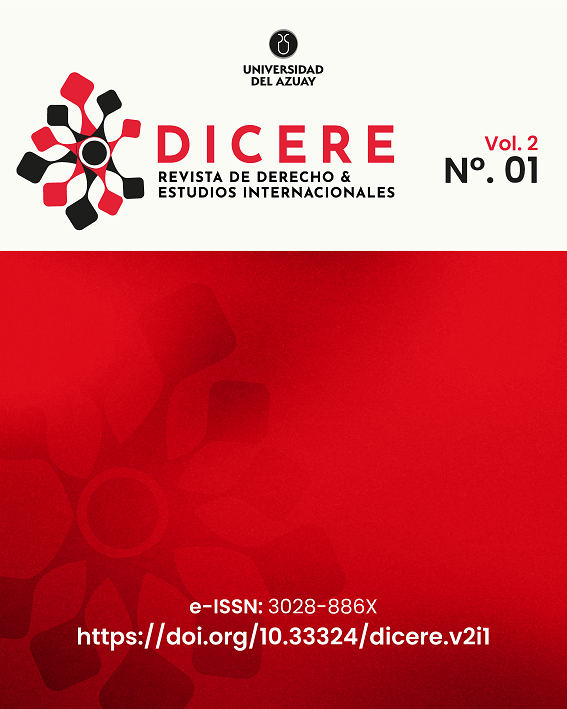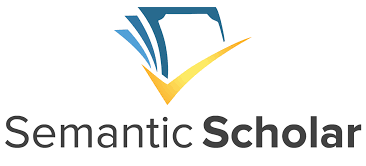La blockchain DAO como una evolución del Trust Norteamericano: Aspectos jurídicos y filosóficos
DOI:
https://doi.org/10.33324/dicere.v2i1.877Palabras clave:
DAO, blockchain, fideicomiso, fiduciario, derecho anglosajón, derecho continentalResumen
Este artículo explora los fundamentos filosóficos del fideicomiso norteamericano y su conexión con la tecnología blockchain, proponiendo que las Organizaciones Autónomas Descentralizadas (DAO) representan su evolución tecnológica directa. Con raíces en las tradiciones del derecho consuetudinario, el fideicomiso se deriva de un énfasis en la libertad negativa, donde los individuos protegen sus bienes de la intervención estatal transfiriendo la propiedad legal a un fideicomisario. Este acuerdo mantiene la autonomía y resiste posibles cambios en la regulación o política gubernamental. Las DAO, impulsadas por contratos inteligentes autoejecutables, conservan el propósito fundamental del fideicomiso —proteger los activos y garantizar la gobernanza independiente—, a la vez que eliminan la dependencia de un único fiduciario. Al distribuir el poder administrativo a través de una red descentralizada, las DAO mejoran la resiliencia ante la imprevisibilidad política y económica. Sin embargo, las jurisdicciones europeas, influenciadas por la noción de libertad positiva de Rousseau, tradicionalmente subordinan la propiedad al interés colectivo, restringiendo así los fideicomisos y, más recientemente, imponiendo medidas regulatorias a las organizaciones blockchain. En Europa, esta idea suele colisionar con los marcos legales que priorizan el interés público, lo que lleva al escrutinio regulatorio de los sistemas basados en blockchain. A pesar de estos desafíos, las DAO continúan perfeccionando los principios fundamentales del fideicomiso en un entorno tecnológicamente avanzado, ofreciendo seguridad y autonomía. En definitiva, esta evolución reafirma la persistente tensión entre la libertad individual y la autoridad gubernamental que sustenta la tradición jurídica anglosajona.
Descargas
Citas
Abdo, K., DeConcini, G., & Matson, T. (2016). Death, taxes & rock n’ roll: Music, law, and aging artist’s estates. Entertainment & Sports Lawyer, 33, 21. Retrieved from: https://foxrothschild.gjassets.com/content/uploads/2017/03/Death-Taxes-and-Legacy-Management.pdf
Alqarni, A. (2024). A blockchain-based solution for transparent intellectual property rights management: Smart contracts as enablers. Kybernetes. https://doi.org/10.1108/K-04-2024-1074
Asante, S. K. (1965). Fiduciary principles in Anglo-American law and the customary law of Ghana—a comparative study. International & Comparative Law Quarterly, 14(4), 1144–1188. https://doi.org/10.1093/iclqaj/14.4.1144
Bell, A., & Parchomovsky, G. (2014). Copyright trust. Cornell Law Review, 100, 1015.
Bergström, F. (2023). Legal classification of DAOs: The ability for a DAO to be recognized as a legal person under Swedish Association law. https://www.diva-portal.org/smash/get/diva2:1762387/FULLTEXT02
Berlin, I. (1958). Two concepts of liberty. In I. Berlin, Four essays on liberty (pp. 118–172). Oxford University Press.
Bodellini, M., & Dalvinder, S. (2021). Decentralised autonomous organizations: Looking for a suitable regulatory treatment. Open Review of Management, Banking and Finance, 1–16.
Brewer, R. (2003). Conservancy: The land trust movement in America. UPNE.
Bruner, C. M. (2009). Power and purpose in the Anglo-American corporation. Virginia Journal of International Law, 50, 579–620. Retrieved from https://papers.ssrn.com/sol3/Delivery.cfm?abstractid=1575039
California Probate Code. (2023). Sections 15200–15210. Retrieved from https://leginfo.legislature.ca.gov
Calcaterra, C. (2023). Reputation tokenomics: DAO governance design analysis. Retrieven from: https://papers.ssrn.com/sol3/Delivery.cfm?abstractid=5018833
Caviezel, M., Spychiger, F., & Stallone, V. (2023, April). Aspects for implementations of decentralized autonomous organizations (DAO) in Switzerland. In World Conference on Information Systems and Technologies (pp. 366–376). Cham: Springer Nature Switzerland. https://doi.org/10.1007/978-3-031-45648-0_36
Cid, E. H. (2017). ¿Se puede adaptar el trust al ordenamiento jurídico español? El notario del siglo XXI: Revista del Colegio Notarial de Madrid, (72), 183–187.
Daly, M. (2024). Cultivating access: The benefits and challenges of using community land trusts to preserve farmland and support farmers. https://scholarworks.umt.edu/etd/12330?utm_source=scholarworks.umt.edu%2Fetd%2F12330&utm_medium=PDF&utm_campaign=PDFCoverPages
David, R., Jauffret-Spinosi, C., & Goré, M. (2016). Les grands systèmes de droit contemporains. Dalloz.
Davis, J. E. (2010). Origins and evolution of the community land trust in the United States. The Community Land Trust Reader, 1(4), 3–47.
Delaware General Corporation Law. (1988). Delaware Statutory Trust Act, Del. Code tit. 12, §§ 3801–3862. Retrieved from https://delcode.delaware.gov/title12/c038/
DuPont, Q., Gkikaki, M., & Rowan, C. (2020). DAO, blockchain and cryptography. A conversation with Quinn Dupont. Exchanges: The Interdisciplinary Research Journal, 7(3). https://doi.org/10.31273/eirj.v7i3.594
Duguit, L. (1912). Les transformations générales du droit privé depuis le Code Napoléon. Librairie Félix Alcan.
Emerich, Y. (2018). Conceptualising property law: Integrating common law and civil law traditions. Edward Elgar Publishing.
European Central Bank. (2023). The future of DAOs in finance: In need of legal status (Occasional Paper No. 331). Retrieved from https://www.ecb.europa.eu/pub/pdf/scpops/ecb.op331~a03e416045.en.pdf
Földi, A. (2009). Historic and dogmatic aspects of the triad of proprietary rights. In Scritti in onore di Generoso Melillo. Retrieved from https://www.academia.edu/download/57220149/Studi_Melillo_20180820.pdf
Furnari, S., & Villani, C. (2024). Regulation of financial protocol DAOs: Addressing the problems of decentralization and AI governance.
Gässl, D., & Weidinger, J. (2023). Unlocking the Potential of DAOs: Legal Challenges, Regulatory Solutions, and Opportunities for a New Paradigm in Business [Technical Report]. Leopold-Franzens Universität Innsbruck. https://doi.org/10.13140/RG.2.2.23934.77128
Golding, M. (1994). Financial aspects of Oregon limited liability companies. Oregon Law Review, 73, 55.
Hansmann, H., & Mattei, U. (1998). The functions of trust law: A comparative legal and economic analysis. New York University Law Review, 73(2), 434–467. Retrieved from https://openyls.law.yale.edu/bitstream/handle/20.500.13051/4605/73NYULRev434.pdf
Haryadi, G. A., Rahaman, M. F., Subhan, M. R., Lee, J. M., & Kim, D. S. (2023). Comparative study of cryptocurrency wallet security: A hybrid, hot, and cold wallet approach. 한국통신학회 학술대회논문집, 97–98. Retrieved from: https://www.researchgate.net/profile/Md-Subhan-2/publication/375187201_Comparative_Study_of_Cryptocurrency_Wallet_Security_A_Hybrid_Hot_and_Cold_Wallet_Approach/links/654372ff0426ef6369f65808/Comparative-Study-of-Cryptocurrency-Wallet-Security-A-Hybrid-Hot-and-Cold-Wallet-Approach.pdf
Hayek, F. A. (1960). The constitution of liberty. University of Chicago Press.
Hegel, G. W. F. (1991). Hegel: Elements of the philosophy of right. Cambridge University Press.
Hude, Z., Iglicar, M., & Mondoh, B. S. (2023). DAOs: Introducing a new era of governance. Zbornik Znanstvenih Razprav, 83, 195. https://doi.org/10.1177/13882627221095105
Jaffey, P. (2015). Explaining the trust. Law Quarterly Review, 131, 377–401.
Knobel, A. (2017). Trusts: Weapons of mass injustice? SSRN. Retrieved from https://ssrn.com/abstract=2943493
Kolektivo. (2022). The Kolektivo framework: Regenerative finance at institutional scale (Blue paper v1.0) [PDF]. Retrieved from https://assets.website-files.com/5fcaa3a6fcb269f7778d1f87/63297723f700491a0698ab5a_Kolektivo%20Bluepaper.pdf?ref=blog.refidao.com
LandDAO. (2025). Launch: LandDAO [Website]. Retrieved from https://launch.landdao.io/
Langbein, J. H. (1995). The contractarian basis of the law of trusts. Yale Law Journal, 105, 625.
Liu, L., Zhou, S., Huang, H., & Zheng, Z. (2021). From technology to society: An overview of blockchain-based DAO. IEEE Open Journal of the Computer Society, 2, 204–215. https://doi.org/10.1109/OJCS.2021.3072661
Manski, S. (2017). Building the blockchain world: Technological commonwealth or just more of the same? Strategic Change, 26(5), 511–522. https://doi.org/10.1002/jsc.2151
McGuire, M. R. (2023). The internet, personal jurisdiction, and DAOs. Washington & Lee Law Review, 80, 1217. : https://scholarlycommons.law.wlu.edu/wlulr/vol80/iss3/8
Merenlender, A. M., Huntsinger, L., Guthey, G., & Fairfax, S. K. (2004). Land trusts and conservation easements: Who is conserving what for whom? Conservation Biology, 18(1), 65–76. https://doi.org/10.1111/j.1523-1739.2004.00401.x
Merk, T. (2024). The unusual DAO: An ethnography of building trust in “trustless” spaces. Internet Policy Review, 13(3). https://doi.org/10.14763/2024.3.1795
Michels, K., & Hindin, D. A. (2022). Building collaboration among community land trusts providing affordable housing and conservation land trusts protecting land for ecological value. Lincoln Institute of Land Policy. Retrieved from: https://go.lincolninst.edu/Michels_WP23KM1.pdf
Mill, J. S. (1859). On liberty. Longman, Roberts & Green.
Mienert, B. (2021). How can a decentralized autonomous organization (DAO) be legally structured? Legal Revolutionary Journal (LRZ). http://dx.doi.org/10.2139/ssrn.3992329
Nevada Legislature. (2011). Nevada Revised Statutes, Chapter 163 – Trusts. Retrieved from https://www.leg.state.nv.us/NRS/NRS-163.html
Newman, A. (2008). Revocable trusts and the law of wills: An imperfect fit. Real Property, Trust and Estate Law Journal, 43, 523.
Nabben, K. (2021). Decentralised autonomous organisations (DAOs) as data trusts: A general-purpose data governance framework for decentralised data ownership, storage, and utilisation. http://dx.doi.org/10.2139/ssrn.4009205
Parker, D. P., & Thurman, W. N. (2019). Private land conservation and public policy: Land trusts, land owners, and conservation easements. Annual Review of Resource Economics, 11(1), 337–354. https://doi.org/10.1146/annurev-resource-100518-094121
Rivero Silva, S. (2024). Miramax, LLC vs. Quentin Tarantino y Romantica, INC: A propósito de la comercialización no autorizada de los Non-Fungible Tokens (NFTs) del guion de Pulp Fiction. Ciencia Jurídica, 13(25), 42–57. https://doi.org/10.15174/cj.v13i25.480
Rikken, O., Janssen, M., & Kwee, Z. (2023). The ins and outs of decentralized autonomous organizations (DAOs): Unraveling the definitions, characteristics, and emerging developments of DAOs. Blockchain: Research and Applications, 4(3), 100143. https://doi.org/10.1016/j.bcra.2023.100143
Rong, H., & Mao, Z. (2023). Deep-dive into CityDAO: An experiment in collective land ownership and decentralized governance. Harvard Kennedy School, Technology and Public Purpose Project. Retrieved from https://belfercenter.org/TAPP
Rousseau, J. J. (1762). Du contract social, ou Principes du droit politique (Vol. 3). Chez Marc Michel Rey.
Rounds Jr., C. E. (1990). Social investing, IOLTA and the law of trusts: The settlor’s case against the political use of charitable and client funds. Loyola University Chicago Law Journal, 22, 163.
Santos, F. (2018). The DAO: A Million Dollar Lesson in Blockchain Governance (Master's thesis). Tallinn University of Technology, School of Business and Governance, Ragnar Nurkse Department of Innovation and Governance.
Santana, C., & Albareda, L. (2022). Blockchain and the emergence of decentralized autonomous organizations (DAOs): An integrative model and research agenda. Technological Forecasting and Social Change, 182, 121806. https://doi.org/10.1016/j.techfore.2022.121806
Silvestrini, G. (2010). Rousseau, Pufendorf and the eighteenth-century natural law tradition. History of European Ideas, 36(3), 280–301. https://doi.org/10.1016/j.histeuroideas.2010.02.003
Skocpol, T., Ganz, M., & Munson, Z. (2000). A nation of organizers: The institutional origins of civic voluntarism in the United States. American Political Science Review, 94(3), 527–546. https://doi.org/10.2307/2585829
Smith, L. (2012). Re-imagining the trust: Trusts in civil law (p. 157). Cambridge University Press.
South Dakota Legislature. (2021). South Dakota Codified Laws on Trusts, SDCL tit. 55. Retrieved from https://sdlegislature.gov/Statutes/Codified_Laws/
Taylor, C. (2015). Hegel and modern society. Cambridge University Press.
Vos, J., Lemmen, C., & Beentjes, B. (2017). Blockchain-based land administration: Feasible, illusory or panacea? In 18th Annual World Bank Conference on Land and Poverty 2017: Responsible Land Governance: Towards an Evidence Based Approach. The World Bank. Retrieved from: https://ris.utwente.nl/ws/portalfiles/portal/287081518/lemmen_blo.pdf
Zaccaria, E. (2019). The nature of the beneficiary’s right under a trust: Proprietary right, purely personal right, or right against a right? Law Quarterly Review, 135, 460. Retrieved from: https://uk.westlaw.com/Document/I79B94910865C11E997B3891CC225DE3D/View/FullText.html
Descargas
Publicado
Cómo citar
Número
Sección
Licencia

Esta obra está bajo una licencia internacional Creative Commons Atribución-NoComercial-CompartirIgual 4.0.
Este artículo está publicado bajo los términos de Derechos de autor y Licenciamiento de esta revista.












